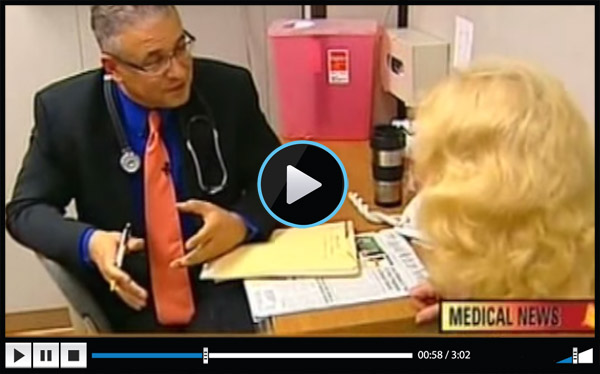Lyme disease costs healthcare system up to $1.3 billion annually, study finds

Our healthcare system is spending between $712 million and $1.3 billion each year to treat Lyme disease and any lingering illnesses associated with it, say researchers from the Johns Hopkins Bloomberg School of Public Health. The study, “Healthcare Costs, Utilization and Patterns of Care following Lyme disease,” also suggests Lyme disease is more debilitating and widespread than previously thought.
An estimated 240,000 to 440,000 people are diagnosed with Lyme disease each year, with the an average of $3,000 spent annually per patient on treatment, according to the study, published online in PLOS ONE.

Treating Lyme disease and its lingering symptoms can cost healthcare system up to $1.3 billion annually.
“Our study looks at the actual costs of treating patients in the year following their Lyme diagnosis,” says study author Emily Adrion, MS. This involves repeated medical visits and diagnostic tests for symptoms that have not resolved after the initial course of antibiotic treatment.
“It is clear that we need effective, cost-effective and compassionate management of these patients to improve their outcomes even if we don’t know what to call the disease.”
When diagnosed early on, Lyme disease, which is transmitted by the bite of a tick infected with the Borrelia burgdorferi bacteria, can usually be treated with a short course of antibiotics. In other cases, the disease can leave lingering symptoms, including fatigue, muscle and joint pain, and/or cognitive impairments.
The severity and cause behind those lingering symptoms is at the root of a never-ending debate within the medical community. While some physicians refer to persistent symptoms as post-treatment Lyme disease syndrome (PTLDS), which requires no further antibiotic treatment, others have termed it chronic Lyme disease and believe antibiotic treatment beyond the 30-day regime may be required.
“Regardless of what you call it,” says Adrion, “our data show that many people who have been diagnosed with Lyme disease are, in fact, going back to the doctor complaining of persistent symptoms, getting multiple tests and being retreated.”
The severity of chronic symptoms post-Lyme disease treatment and the size of the patient population effected may be vastly underestimated. When compared to CDC estimates, the Johns Hopkins researchers found a significantly higher percentage of patients suffering from persistent symptoms following a standard course of antibiotic treatment for Lyme disease.
In fact, the study found 63% of those treated reported at least one PTLDS-related diagnosis, a rate 36 percentage points higher than those who did not have Lyme disease. Whereas, the CDC reports 10% to 20% of patients experience lingering symptoms after completing 2- to 4-week antibiotic regimes for Lyme disease.
The researchers also report that individuals with Lyme disease were 5.5 times more likely to have a diagnosis of debility and excessive fatigue. And, within the year following the Lyme disease diagnosis, patients had 87% more visits to the doctor and 71% more visits to the emergency room than matched controls.
I discussed the economic burden of Lyme disease on our society in a 2010 paper entitled, Proof that Chronic Lyme Disease Exists. A study in 2002, found the mean cost of the disease was estimated to be $16,199 annually per patient in the U.S.
The annual per-patient cost for chronic Lyme disease is substantially higher than the cost for other common chronic illnesses, such as: $10,911 for fibromyalgia, $10,716 for rheumatoid arthritis, and $13,094 for lupus.
Eighty-eight percent of the cost ($14,327) of Lyme disease consisted of indirect medical cost, nonmedical cost, and productivity losses. Cutting medical cost would save, at most, only 12% or $1,872 per annum.
In 2002, based on the 23,000 cases reported to the Centers for Disease Control and Prevention (CDC) that year, the annual economic cost of Lyme disease in the U.S. was estimated to be $203 million. Considering that the actual number of Lyme disease cases is believed to be 10 times higher than the number of cases reported to the CDC, the actual annual cost could be $2 billion.
In another paper, Insufficient Evidence to Deny Antibiotic Treatment to Chronic Lyme Disease Patients, the cost of a growing chronic Lyme disease population was found to be significant, using a CDC economic cost study of clinically defined late-stage Lyme disease in Maryland’s Eastern Shore.
“These patients are lost,” says lead author John Aucott, MD, and assistant professor of rheumatology at the Johns Hopkins University School of Medicine. “No one really knows what to do with them. It’s a challenge but the first thing we need to do is recognize this is a problem.”




Olivia
01/06/2023 (8:34 pm)
this is very not helpful I need how much it is for a person and I need how much the world has already spent on helping people with Lyme. I need to know for school and you should add this info to this article
Pamela
06/30/2022 (11:38 am)
Well I can contest that this isn’t right I been suffering with this for over ten years and live an hour outside Washington Dc and been every place you can imagine I was even the at John Hopkins and the Mayo hospital in Jacksonville Florida but was told I didn’t have Lyme because the only way I was able to get right results was from a nurse practitioner that didn’t take insurance after thousands and thousands of dollars still so sick and just got test again from my medical doctor and again shows I have chronic Lyme disease yesterday had to call Social services to help me waiting for response I have nothing left no car no money no credit and loss of marriage and home have also toxoplasmosis, mycoplasma, Chronic Lyme and diabetic high blood pressure and something with my heart stomach head yes it’s that bad the SS can tell you she came to see me yesterday and I showed her and told her my journey please contact me if you all treat my conditions I’ve been asking doctors and my insurance company to please help me get appointment I have Cigna insurance and my name is Pamela Tharpe 540-692-5433
Dr. Daniel Cameron
07/01/2022 (6:57 am)
I have patients in my practice who have similar challenges. I find it difficult to determine if there is a persistent tick borne infection. I also lean on other specialists to rule out other illnesses. You should call my office at 914 666 4665.
Lynn Shepler MD JD
02/07/2015 (3:20 am)
Brilliant!
Joy dangers oncken
08/06/2020 (8:22 pm)
Here’s my reality …. we spent 30,000. Last year for my son and myself . We are not well off . Insurance only helps with labs , antibiotics or tests for side issues … ie nerve damage to my son has left his large intestines not functioning which was diagnosed by X-ray with barium . So , the amount you noted is minor in comparison to what is truly spent annually